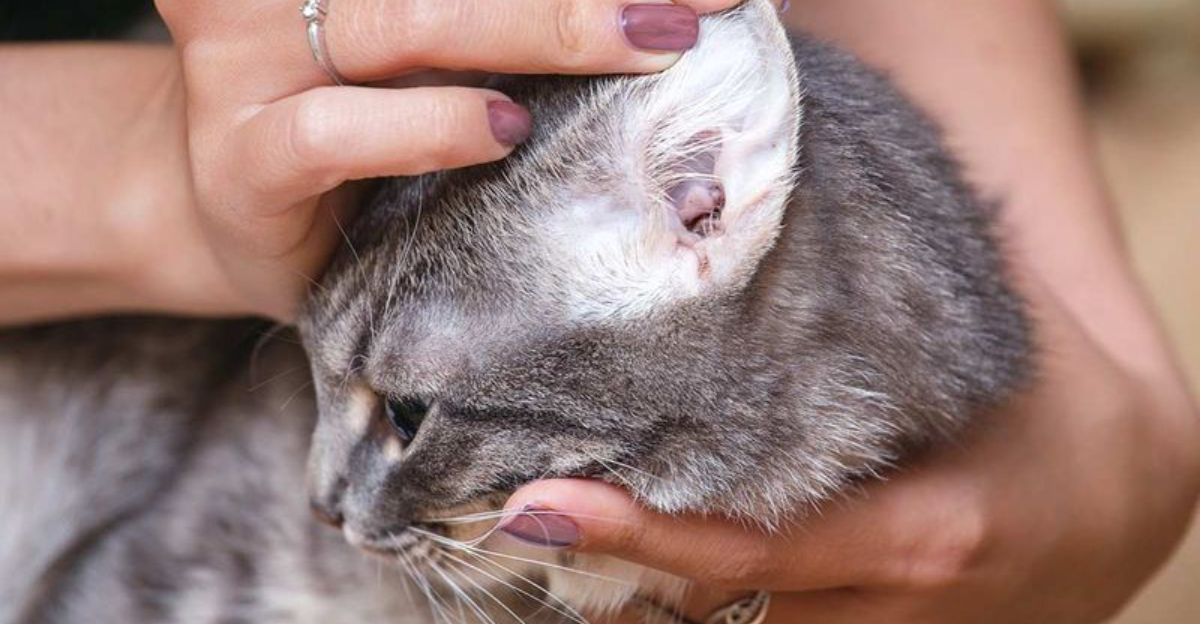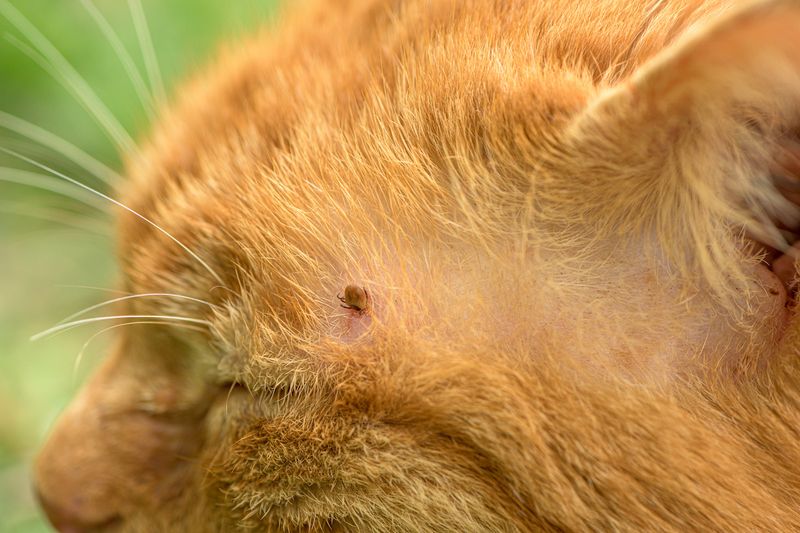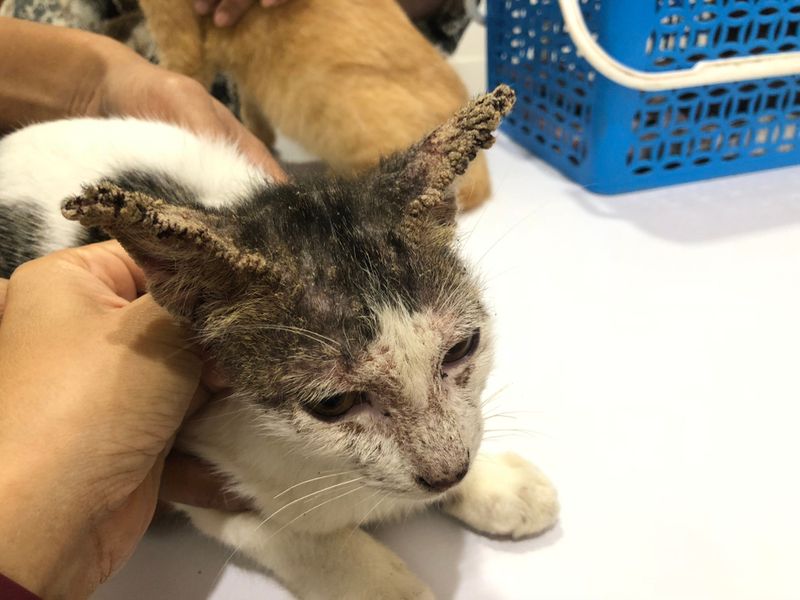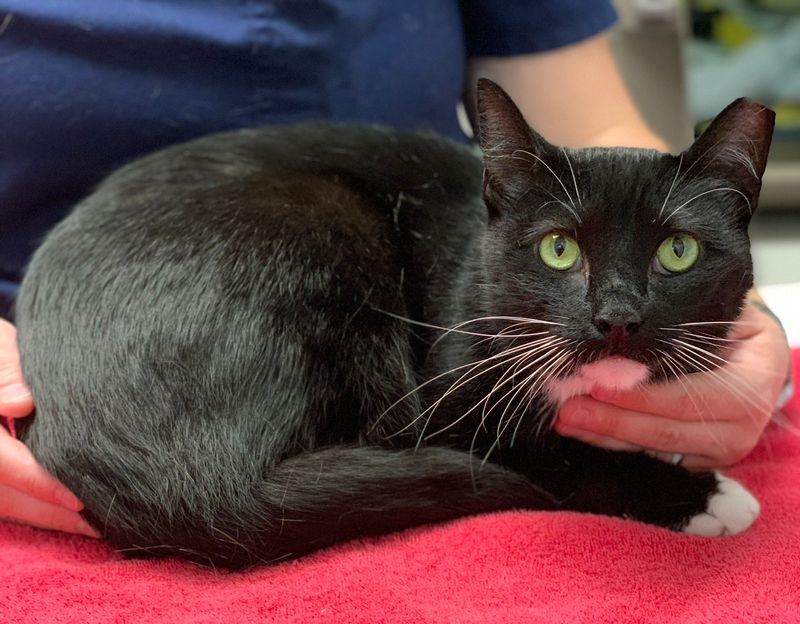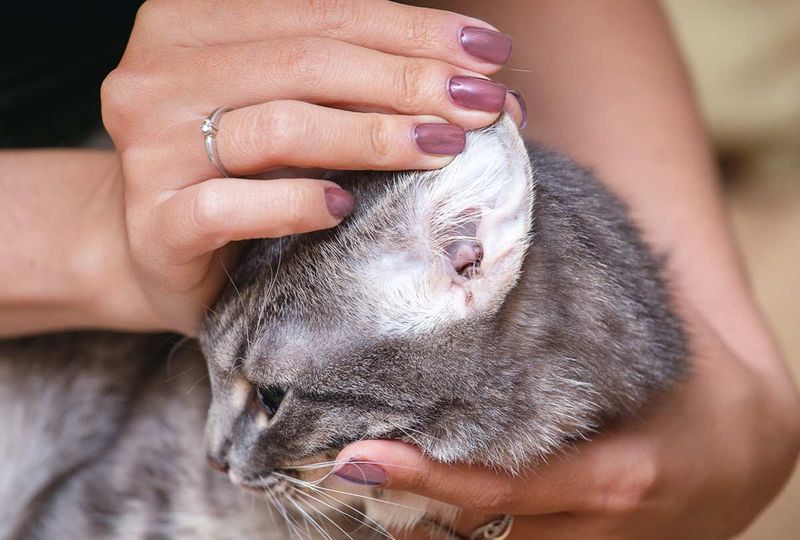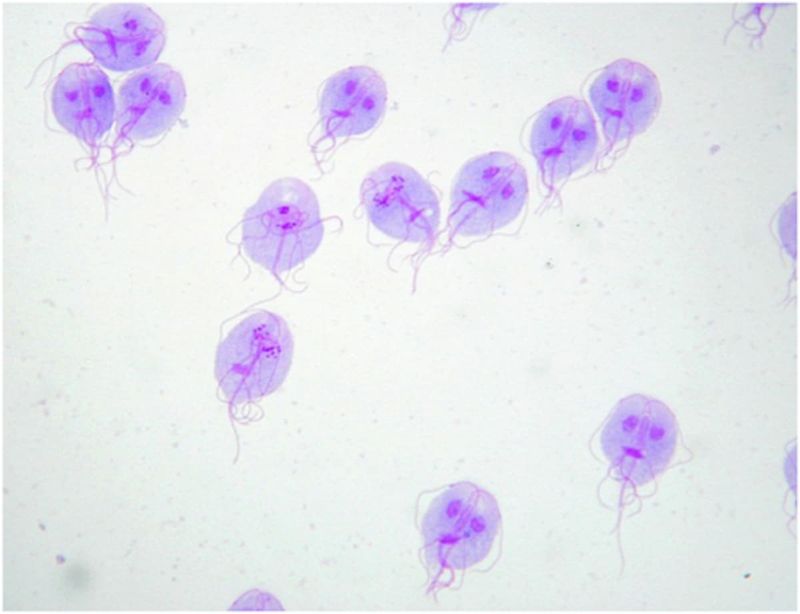📖 Table of Content:
Cats make wonderful companions, but they can sometimes carry unwanted guests that pose health risks to both them and us. These parasites range from tiny microscopic organisms to visible worms that can cause various health problems. Understanding these common cat parasites is essential for protecting your feline friend and your family from potential infections and diseases.
1. Fleas
These tiny jumping insects are the most common external parasites found on cats. Beyond causing itchy bites and discomfort, fleas can transmit tapeworms and diseases like cat scratch fever to humans.
Children are particularly vulnerable when playing with infested pets. Fleas multiply rapidly – a single female can lay up to 50 eggs daily, quickly turning a minor problem into a full-blown infestation.
Regular prevention with vet-approved treatments is crucial. If you spot your cat scratching excessively or notice tiny black specks (flea dirt) in their fur, act quickly to prevent these pests from spreading throughout your home.
2. Toxoplasma gondii
Cats become infected with this microscopic parasite by eating infected rodents or birds. The concerning part? They can then shed infectious oocysts in their feces that humans can accidentally ingest.
Pregnant women face the highest risk, as toxoplasmosis can cause birth defects or miscarriage. Immunocompromised individuals also need to be cautious around cat litter.
Protect yourself by wearing gloves when changing litter boxes, cleaning them daily (oocysts take 1-5 days to become infectious), and keeping outdoor cats from hunting. Cooking meat thoroughly and washing produce carefully also reduces your risk of infection.
3. Roundworms
Spaghetti-like in appearance, these intestinal parasites commonly affect kittens but can infect cats of any age. Humans can accidentally ingest roundworm eggs from contaminated soil or cat feces, leading to a condition called visceral larva migrans.
Children playing in sandboxes or gardens where cats defecate face particular danger. The migrating larvae can damage internal organs and occasionally affect eyesight in severe cases.
Regular deworming of your cat is your best defense. Keep children away from areas where cats might eliminate, cover sandboxes when not in use, and practice good hygiene after gardening or handling your pet.
4. Hookworms
Blood-sucking parasites that attach to the intestinal lining, hookworms can cause anemia in heavily infected cats. For humans, the risk comes from walking barefoot on contaminated soil, where larvae can penetrate skin and cause a condition called cutaneous larva migrans.
This painful, itchy skin infection appears as red, raised tracks where the larvae have traveled. Gardeners and children playing outdoors barefoot are most vulnerable to this unpleasant condition.
Monthly preventative medications for your cat help reduce environmental contamination. Wearing shoes outdoors and keeping cats on regular parasite prevention are simple steps that significantly reduce your family’s risk of exposure.
5. Tapeworms
Flat, segmented worms that resemble rice grains when dried, tapeworms typically infect cats when they ingest infected fleas during grooming. Though rare in humans, children can accidentally ingest fleas and develop intestinal tapeworm infections.
Watch for small white segments that look like moving rice grains near your cat’s rear end or in their bedding. While generally not dangerous to healthy cats, heavy infestations can cause weight loss and digestive issues.
Effective flea control is the key to preventing tapeworms. Regular veterinary check-ups help catch these parasites early, and proper hand washing after handling your cat reduces the already small risk of human infection.
6. Ear Mites
Tiny spider-like creatures that infest the ear canal, ear mites cause intense itching and discomfort for cats. The telltale dark, coffee-ground-like debris in the ears signals their presence. While primarily affecting cats, these highly contagious parasites can occasionally transfer to humans.
Human infections typically cause temporary skin irritation, usually on the arms, where close contact with an infected cat occurs. Multi-pet households face a rapid spread of these parasites between animals.
Regular ear checks and prompt treatment of affected cats prevent suffering and reduce transmission risk. If your cat is shaking their head frequently or scratching at their ears, a veterinary examination is warranted.
7. Giardia
This microscopic intestinal parasite causes diarrhea and digestive upset in cats, especially those who drink from contaminated water sources. Humans can contract Giardiasis from their cats through accidental ingestion of infectious cysts in cat feces.
The resulting infection causes uncomfortable symptoms like diarrhea, stomach cramps, and nausea that can last for weeks if untreated. Young children who might put contaminated fingers in their mouths face the highest risk.
Prevent transmission by practicing excellent hygiene after handling your cat or their litter box. Keep your cat indoors to prevent them from drinking from puddles or streams, and have your veterinarian test for this parasite if your cat develops persistent diarrhea.
